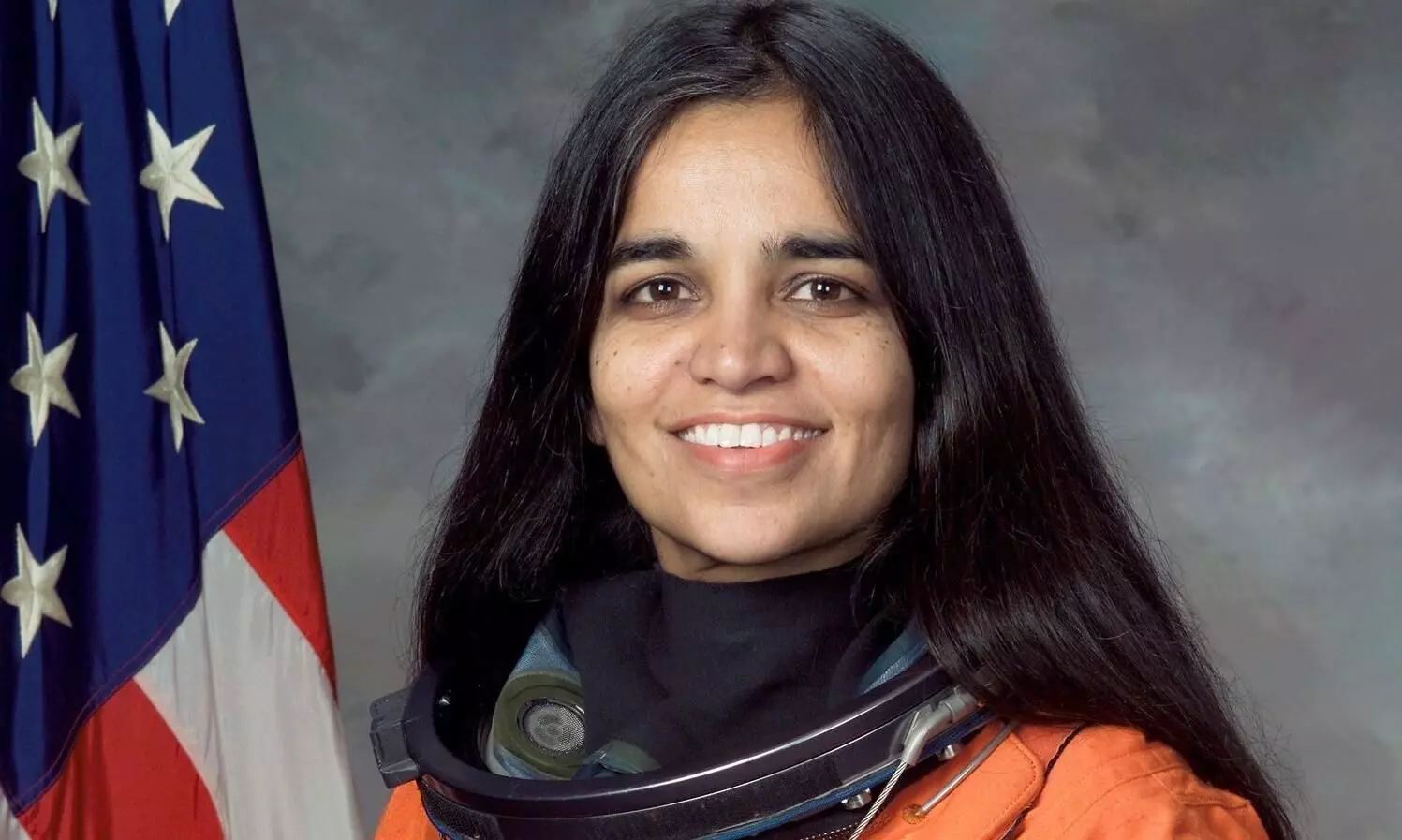
Source: Twitter
Guwahati, Feb 1: Once while explaining set theory, a teacher from DAV College for Women, Karnal used the example of women astronaut in India to describe a null or empty set as there were none during the '60s. To this one of her students exclaimed that 'the set may not be empty in future' and she herself went on to fill the set by becoming the first woman astronaut from India. She is non other than Kalpana Chawla.
Though the conversation between the teacher and student may sound prophetic, Chawla's contribution to women empowerment and science will inspire generations to come.
Known as Montu during her early days, she chose to be named as 'Kalpana' meaning imagination. Rightfully so, as she was a highly imaginative child and was fascinated by stars, planets, constellations and planes.
Born and brought up in Karnal, Haryana she completed her Pre-University from DAV College for Women. Later she joined Dyal Singh College for the Pre-Engineering course, passed it with excellence and secured admission in the Punjab Engineering College, Chandigarh.
Chawla pursued her Bachelor's degree in Aeronautical Engineering in 1982 from Punjab Engineering College. During her graduation days, she shifted base to Chandigarh and even learned karate for self defence. She enjoyed flying, hiking, back-packing, and reading, she learned everything that caught her attention including Bharatnatyam and scuba diving. Despite she was persuaded to take up some other branch of engineering as aeronautics has lesser scope, she did not pay heed and was determined to become a 'flight engineer'.
She later applied to the University of Texas and moved to the United States, in September 1982. During this period, she met Jean-Pierre Harrison, a flight instructor and aviation author. Similar interests brought them closer and they tied the knot in 1983.
Chawla completed her master's degree in 1984 and doctorate of philosophy in aerospace engineering from the University of Colorado in 1988.
The Indian-American astronaut started working at the NASA Ames Research Centre in 1988 in the area of powered-lift computational fluid dynamics. She joined Overset Methods Inc in 1993. She was responsible for the development and implementation of efficient techniques to perform aerodynamic optimization.
It may be mentioned here, that in 1993 her first application to NASA was rejected. After she gained US citizenship through naturalization, she applied for the NASA astronauts corps. Following her selection in December 1994, she became an astronaut candidate in the 15th Group of Astronauts at Johnson Space Center in 1995.
She held a Certified Flight Instructor's license with aeroplane and glider ratings, Commercial Pilot's licenses for single and multi-engine land and seaplanes, and Gliders, and instrument rating for aeroplanes.
Her dream turned into reality when in 1997 she was a part of six-astronaut crew who were on the mission Space Shuttle Columbia. The mission made her the first Indian origin woman and second Indian to fly in space.
STS-87 Columbia (November 19 to December 5, 1997) was the fourth U.S Microgravity Payload flight and focused on experiments designed to study how the weightless environment of space affects various physical processes, and on observations of the Sun's outer atmospheric layers. STS-87 made 252 orbits of the Earth, traveling 6.5 million miles in 376 hours and 34 minutes. The trip was a success.
In 2001, she was chosen for her second mission to space as part of the crew of STS-107. After repeated delays, the mission was launched on January 16, 2003.
STS-107 Columbia (January 16 to February 1, 2003). The 16-day flight was a dedicated science and research mission. Working 24 hours a day, in two alternating shifts, the crew of 7 successfully conducted approximately 80 experiments. The STS-107 mission ended abruptly on February 1, 2003 when Space Shuttle Columbia and her crew perished during entry, 16 minutes before landing on the earth's atmosphere.
Chawla's story has been written several times over, her loss has been mourned, and her contributions have been vastly recognised today. She was posthumously awarded the Congressional Space Medal of Honour, the NASA Space Flight Medal, and the NASA Distinguished Service Medal, in 2004. NASA dedicated Altix supercomputer to the memory of the astronaut 'KC'. One of the seven peaks of Columbia hills on Mars was named Chawla Hill. At home, India's first satellite of METSAT-1 series was renamed Kalpana-1. Apart from these an asteroid, hospitals, universities and roads were also named after her.
